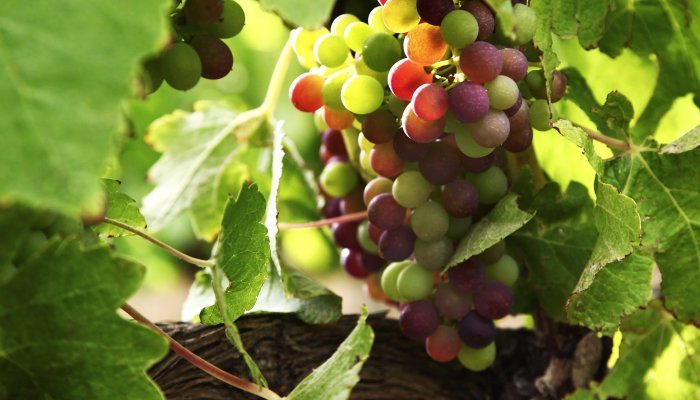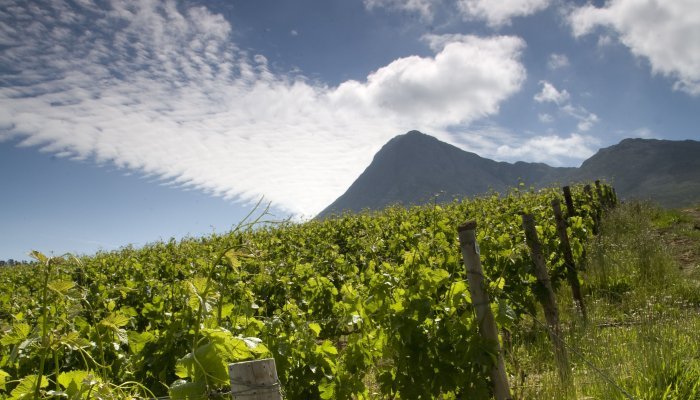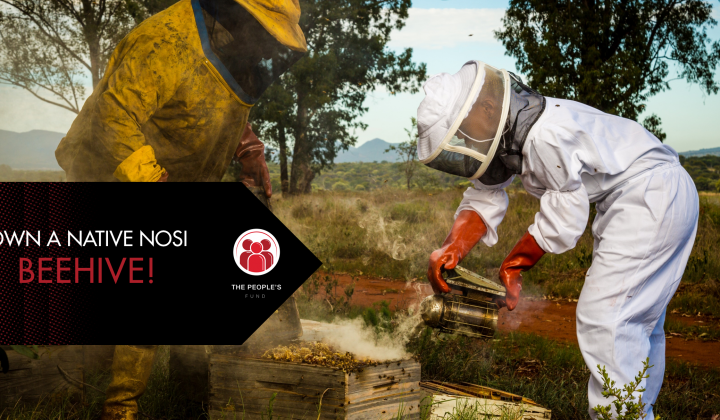It was a casual remark, more of a joke than anything, that a new friend in the wine trade made, standing around the braai. It got me thinking. And Googling. According to one study published by the Proceedings of the National Academy of Sciences, by 2050 we stand to lose between 25% and 73% of global viticulture regions. Gulp!
In South Africa, the severe Western Cape drought has put added pressure on the industry. Weather patterns are shifting, and extreme weather events are set to happen more frequently. The industry needs to consider drastic changes to remain viable into the future.
South Africa’s vulnerability to climate change
In its white paper, National Climate Change Response, the South African Department of Environmental Affairs lays out the facts: as a water-stressed country, South Africa is extremely vulnerable to the impacts of climate change. Predictions suggest that by mid-century, the South African coast will warm by 1 to 2°C and the interior by 2 to 3°C. By 2100, warming is projected to reach around 3 to 4°C along the coast, and 6 to 7°C in the interior.
“Life as we know it will change completely: parts of the country will be much drier and increased evaporation will ensure an overall decrease in water availability,” the report notes. “Increased occurrence and severity of veld and forest fires; extreme weather events; and floods and droughts will also have significant impacts. Sea-level rise will negatively impact the coast and coastal infrastructure. Mass extinctions of endemic plant and animal species will greatly reduce South Africa’s biodiversity with consequent impacts on eco-system services.”
It’s a bleak picture. And the current Western Cape drought, attributed chiefly to El Niño and climate change, has given us a bitter taste of what the future may hold.
What climate change means for the wine industry
For the wine industry, locally and globally, change is crucial for survival. “I think in some areas it will become more difficult to grow vines and it will be necessary to rethink which cultivars are grown where,” says Carolyn Martin, co-owner of Creation Wines, based in Hemel-en-Aarde. “The climate change is more evident inland than on coastal areas, as long as the sea temperature remains consistent. If the sea temperature remains at around +-12 degrees Celsius, we’ll have a stable climate in the Hemel-en-Aarde. The bigger effect may be in areas such as Burgundy and Bordeaux.”
Global weather changes have already seen earlier-than-average harvests, more frequently, for these French regions. While this has actually made for better wines, Martin notes that issues like early spring frost and hail are proving problematic.
“Where there is a more continental climate, there are impacts that we weren’t aware of, like early bud break, which makes vines susceptible to spring frosts,” Martin says. “Meso-climatic conditions (climate characteristics of a particular vineyard site), such as slope aspect, elevation and prevailing winds, become important in the greater scheme of things. This can mean that what was once the best aspect for making top-quality Riesling in the Mosel, for instance, might not be the best aspect anymore.”
She says certain French regions (and those in Switzerland and Austria) may need to rethink their appellations (the legally defined and protected geographical indications that identify the origin of wine grapes).
“Global warming does not only mean less rain and higher temperatures, but it also means more extremes,” says Boets Nel, MD of De Krans Wines, located in Calitzdorp, which has been hit hard by the current drought. “We will be more prone to droughts and floods, too much rain/rot, hail (we already insure against hail damage) and possible spring frost.”
One silver lining, according to Nel and Martin, is that better ripening of grapes in certain “borderline” winemaking areas, like the UK, may make these regions viable for viticulture. The UK, for example, is now producing top-quality sparkling wine.
SA wine industry response
Rico Basson, MD of VinPro, says the industry has begun to focus on sustainability over the last decade. “We have the world-class Integrated Production of Wine scheme, a voluntary environmental sustainability scheme established by the South African wine industry in 1998, and comprehensive programmes such as Confronting Climate Change,” he says. “These include a strong focus on the reduction in carbon footprint, renewable energy (such as solar at farm and winery level) and drought-resistant plant material. This is further complemented with various training and education initiatives to ensure that a behavioural change is also made in precision farm management of aspects such as soil and water, improving efficiency levels of the value chain and management practices. A number of these initiatives are done in close collaboration with tertiary institutions and government departments such as GreenCape.”
The South African wine industry is also a member of the International Organisation of Vine and Wine (OIV) and a founding member of the World Wine Trade Group. “These forums have a strong focus on trade and sustainability-related matters and continuously seek better alignment, traceability and global best practice,” says Basson.
In November 2016, the Institute for Grape and Wine Sciences (IGWS) released practical guidelines for managing grapevines during drought periods, which has been well received by industry. Covering everything from the management of watering and irrigation to soil surfaces, fertilisers, canopy management, crop/yield control, pruning, managing young vineyards and pre-harvest considerations, it lays out strategies for dealing with the drought.
VinPro and Winetech (Wine Industry Network for Expertise and Technology) have presented industry workshops on Efficient Irrigation in Periods of Water Scarcity, and some wine farms are making use of the Western Cape Department of Agriculture’s free web-based FruitLook database to determine vine stress levels for optimal water management.
Still, the response at farm level in certain regions has been drastic. De Krans, for example, has had no significant rain since March 2014. “To claim this is 100% due to climate change/global warming is maybe not a correct assumption, as we’ve had dry and wet cycles for hundreds of years. But the last serious drought like this was around 1915, according to records,” says Nel.
Nel says that crops are expected to be down by at least 30 to 40% in the 2018 harvest. “We’ve had no irrigation water for two-thirds of our farm since March 2016 due to an empty Gamkapoort Dam (our main irrigation dam). If we do not get rain over the next month, it will result in permanent damage to some of the vines on this part of our farm. Some vines will die. I am not sure what percentage as I have never been in this situation in my lifetime, since I started farming at De Krans in 1982.”
To replant vineyards would cost more than R150 000 per hectare. To try to save the vines, De Krans did a severe suckering, removing roughly 40% of the green shoots (known as ‘suckering’) to reduce water usage.
“This will hopefully result in the vines having a better chance of survival until we have water again,” Nel says. “We might lose part of or the whole crop in some blocks, but we might save the vines. We have started removing more grapes and shoots again in some struggling vineyard blocks to try to keep them alive. We also ensure that the soil is clean with absolutely no weeds that can compete with the vines for water, and use mulch to keep moisture in the soil. However, we only had 50mm of rain in 2017 and 100mm in 2016 in total (our usual annual rainfall is 250mm), with no significant rainfall in the Great Karoo, our most important catchment area, so I do not think all these measures will be enough.”
De Krans has also implemented long-term strategies to help withstand the effects of climate change. The focus is on Portuguese grape varietals, which can withstand higher temperatures and require less water. “This is what we specialise in, especially in the poorer soils,” Nel says. “We have a similar climate to the Douro valley in Portugal. We also only use drought-resistant rootstocks, which helps in a very dry year like 2017.”
According to Nel, the demand for Portuguese-style wines is increasing in South Africa, particularly in restaurants. In 2017, the De Krans Tritonia Red Blend (made only from Portuguese grape varieties) won the Best Non-Bordeaux Red Blend in South Africa at the Old Mutual Trophy Wine Show.
Martin adds that Chenin Blanc, Syrah, Pinotage and Cinsaut can also work in warmer conditions. She believes other cultivars need experimentation locally.
What climate change means for consumers
Nel says wine quality might be more variable from year to year, especially in Europe. Volumes are likely to be lower (2017 produced the lowest crop in Europe since the 1950s), driving prices up.
“In general, smaller yields in the right areas will mean that quality goes up, while a wine shortage will lead to a higher cost per bottle,” agrees Martin. “However, many factors influence a wine shortage. For example, economic factors in South Africa may have an impact on new vineyards not being planted. There are also other issues impacting the vintage of three of the world’s main wine producing countries. France, Italy and Spain had a bad year due to frost, flowering and hailstorms. Fires in the US will have an impact for the next few years.”
Should South African wine drinkers be stocking up now? “No, it’s not necessary at all,” says Nel. “This will be a gradual process and will most probably affect the lower-priced wines more than the higher-priced wines.”
“Life as we know it will change completely...”
“The UK ... is now producing top-quality sparkling wine”
“The focus is on Portuguese grape varietals, which can withstand higher temperatures and require less water”








